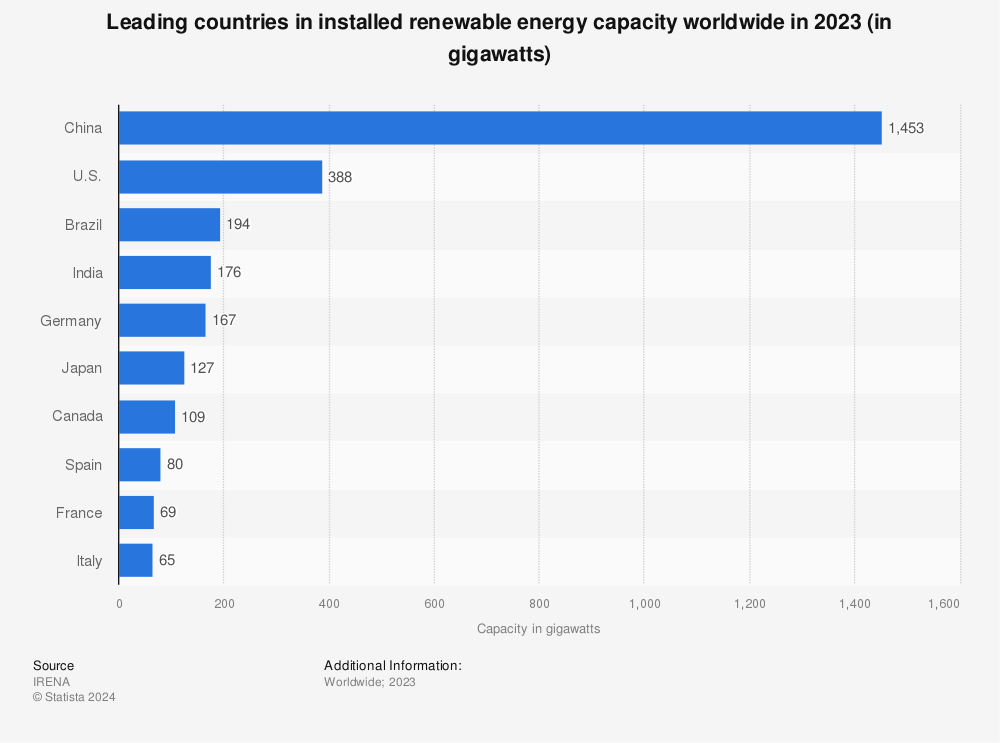The world is always investing in energy, be it “clean” or “dirty.” But, as of 2015, it’s officially investing more in sustainable sources — wind, water and sun — than it is in traditional “dirty” counterparts, according to a new report from the International Energy Agency (IEA).
Half a million solar panels were installed every day last year. In China, two wind turbines were installed every hour, and, in the next six years, worldwide renewable energy will grow 13% more than previously expected, with the price of wind and solar technology dropping significantly.
That doesn’t mean we’re currently using that new capacity. In 2015, renewables were 23% of overall electricity generation. The IEA projects it will be 28% by 2021.
It’s a tangible step toward one of the 17 Sustainable Development Goals, which is to provide “Affordable and Clean Energy.” And 14 years ahead of its deadline, it seems reasonable to ask whether we’re actually on track to meet it.
The answer? Yes, and no.
Read More: Four Things Obama’s Done to Slow Climate Change
Those are conclusions which need unpacking if we’re going to figure out how to steer the planet toward our vision of renewable energy for all.
China and the Power of Emerging Market(s)
The role of China, India, and Mexico — all of whom are heavily investing with renewable energy — can’t be understated. Although still considered “emerging markets,” they’ve effectively pioneered the application of renewables.
Let’s put that in perspective. In 2015 annual renewable electricity capacity growth reached an all-time high of 153 gigawatts, which the IEA says is more than enough energy to power all of Canada. Forty percent of that growth came from China, whose capacity is supposed to increase again by 60% next year.
By comparison, the Southeast Asian region has had huge growth in electrical demand. It’s been a driver of renewable energy development in countries like India, whose photovoltaic (PV) capacity is set to increase eight-fold by 2021.
Mexico, meanwhile, experienced triple-digit growth rates in the past decade. By 2025, the country wants to source 35% of its electricity from clean sources. It’s hoping to achieve that goal through policy reform, which is making energy alternatives more cost-affordable.
The Bigger Challenge
Some developing countries are truly paving the way. But China, India, and Mexico are a fair few of the many countries with big energy needs. Accordingly, they are only one piece of the solution.
In much of the world, we are overlooking one tenet of Sustainable Development Goal No. 7, which stipulates an expansion of “infrastructure and technology for supplying modern and sustainable energy services for all in developing countries, in particular least developed countries, small island developing States, and land-locked developing countries.”
Which is to say, if we actually intend to meet our 2030 objective, we need to focus on switching developing countries to renewable sources as well.
Read More:In ‘Accidental’ Win for the Planet, Scientists Convert CO2 into Ethanol
While the energy demands of the developed world are largely stabilized, developing countries, which have huge population growth, will present a challenge. While countries like China, Mexico and India pave the way for energy alternatives, much of Southeast Asia and sub-Saharan Africa still rely on traditional, carbon-based fuel sources.
The energy demands of these countries are huge, and, in practice, they simply aren’t being met by either traditional or renewable sources. In a metropolis like Lagos, Nigeria, the notion of renewable energy is still a dubious luxury, such that while its population demands continue to grow, greenhouse gas-emissions are likely to grow with it.
That’s one reason why the IEA has emphasized the need for better policy mechanisms in developing countries.
“Policy uncertainty persists in too many countries, slowing down the pace of investments,” said the IEA press release, who said they see “a two-speed world for renewable electricity over the next five years.”
For all of us, the bigger challenge will be to bring those two speeds into synch.
